Name Wally Herbert Role Writer | Awards Founder's Gold Medal | |
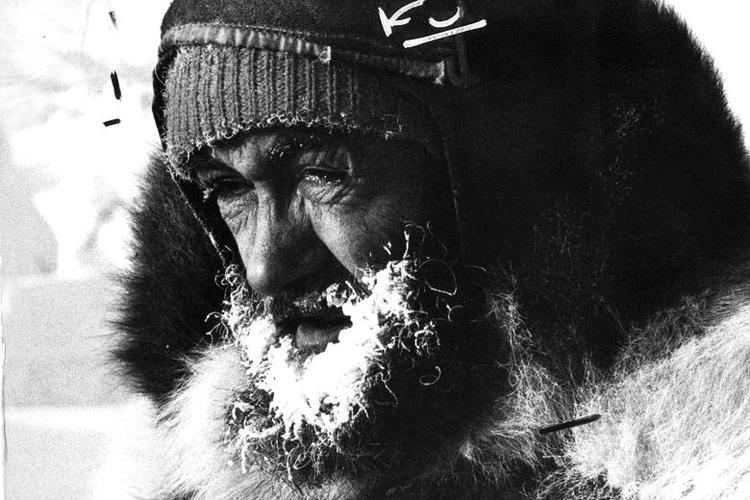 | ||
Books The Polar World: The Unique Vision of Sir Wally Herbert | ||
Visions.The Antarctic Files / Sir Wally Herbert. 17. 1994.wmv
Sir Walter William "Wally" Herbert (24 October 1934 – 12 June 2007) was a British polar explorer, writer and artist. In 1969 he became the first man fully recognized for walking to the North Pole, on the 60th anniversary of Robert Peary's famous, but disputed, expedition. He was described by Sir Ranulph Fiennes as "the greatest polar explorer of our time".
Contents
- VisionsThe Antarctic Files Sir Wally Herbert 17 1994wmv
- In Search of the South Pole with Kari Herbert
- Early life and career
- British Trans Arctic Expedition
- Later life
- Author and artist
- Peary controversy
- Legacy and honours
- References
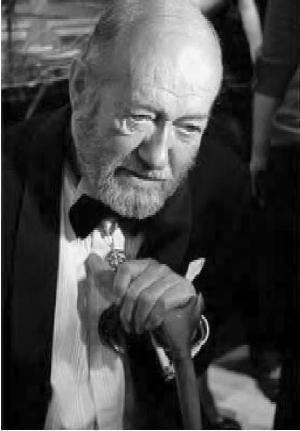
During the course of his polar career, which spanned more than 50 years, he spent 15 years in the wilderness regions of the polar world. He travelled with dog teams and open boats well over 23,000 miles – more than half of that distance through unexplored areas.
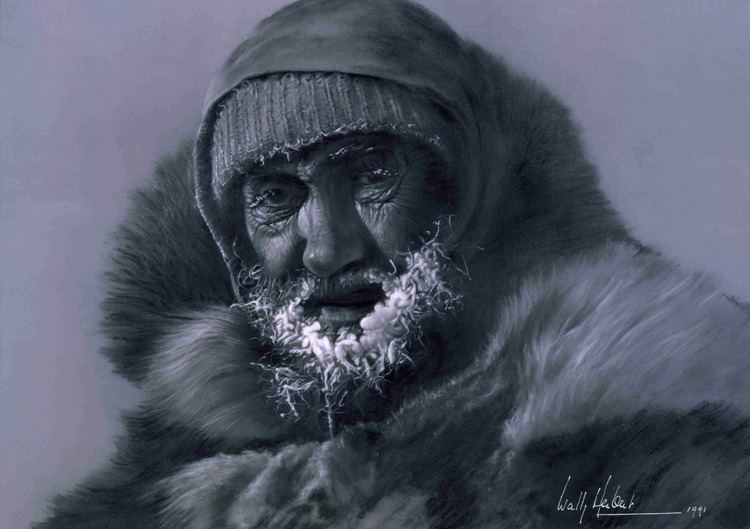
Among his several books, which he illustrated, were works dealing with polar exploration. He also had solo exhibitions of his drawings and paintings. was commissioned by the National Geographic Society to review and assess Peary's records as to his noted 1909 expedition. In The Noose of Laurels (1989), Herbert concluded that Peary had falsified some records and had never reached the North Pole, although he had been close. Herbert's conclusions have been widely accepted. In 2000 he was knighted for his polar achievements.

In Search of the South Pole with Kari Herbert
Early life and career
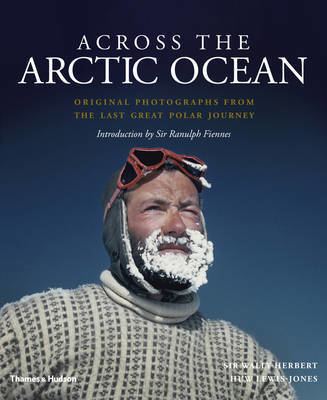
Walter Herbert was born into an army family in England who emigrated to Egypt on assignment when he was three. They moved on to South Africa for nine years. He studied at the Royal School of Military Survey, then spent 18 months surveying in Egypt and Cyprus. He travelled back to England through Turkey and Greece, drawing portraits for his board and lodging.
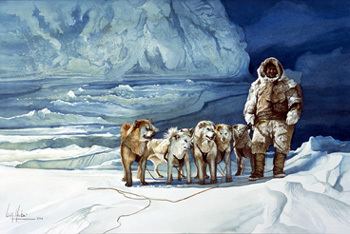
In 1955, when Herbert was 21, he carried out surveying in the Antarctic with the Falkland Islands Dependencies Survey, during which he became an expert in dog sleighing. On a journey along the Antarctic Peninsula from Hope Bay to Portal Point, he sledged some 5,000 km. This experience with dogs led him to a job with the New Zealand Antarctic programme, which commissioned him to purchase dogs in Greenland for the Antarctic. There he learnt Inuit methods of dog driving.
As leader of an exploration party in the early 1960s, Herbert surveyed a large area of the Queen Maud range and followed Shackleton (1908) and Scott's (1911) route up the Beardmore Glacier. Denied a request to proceed to the South Pole, his party ascended Mount Nansen and descended a route taken by Amundsen in 1911, thus being the first to retrace these explorers' traverses. In 1964 he trekked the routes taken by Sverdrup and Cook from Greenland to Ellesmere Island in the Arctic.
British Trans-Arctic Expedition
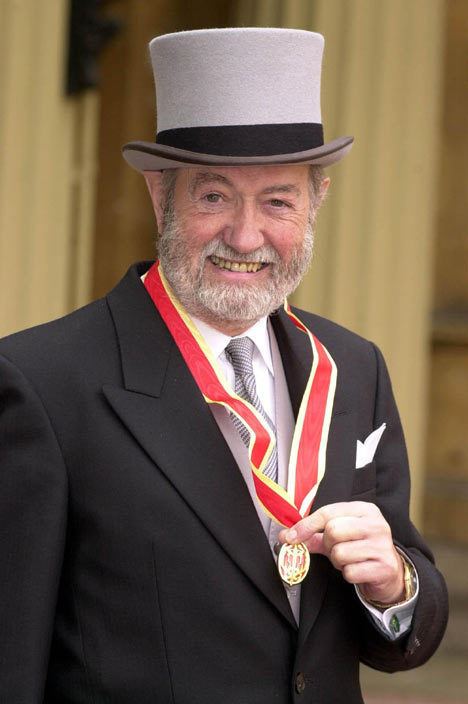
From 1968 to 1969, Wally led the British Trans-Arctic Expedition, a 3,800-mile surface crossing of the Arctic Ocean, from Alaska to Spitsbergen, which some historians had billed as ‘the last great journey on Earth.’ In July 1968, having crossed 1,900 km of rough drifting ice, Herbert and his team established a camp. Because they could not reach a position where the drift of the trans-Arctic ice-stream was in their favour, they were forced to stay for the winter, as they drifted around the pole. Only when sunlight returned the following year could they continue their journey, finally reaching the North Pole via the Pole of Inaccessibility on 6 April 1969. Their feat was recognised by the Prime Minister, Harold Wilson, as "a feat of endurance and courage which ranks with any in polar history", and which Prince Philip stated "ranks among the greatest triumphs of human skill and endurance".
In recognition of his polar achievements, Herbert received several honours and awards: among them the Polar Medal and bar; the Founders' Medal of the Royal Geographical Society, the gold medals of several Geographical Societies, and the Explorers Medal of the Explorers Club. He has a mountain range and a plateau named after him in the Antarctic; the most northerly mountain in Svalbard named after him in the Arctic.
Later life
Between 1979 and 1981 Herbert and Allan Gill attempted to circumnavigate Greenland by dog sled and umiak, a traditional boat. It was planned to take 16 months to cover the 13,000 km but poor weather made it impossible. Near Loch Fyrne, Herbert wrote:
We were forced to take to the land and haul the sledges across steaming tundra and rock bare of snow, swollen rivers, baked mud flats, sand-dunes, swamps and stagnant pools. We were blasted by duststorms and eaten alive by mosquitoes
Author and artist
Herbert was also a prize-winning author and an artist, and had one-man shows in London, New York and Sydney. He wrote a number of books and drew some of the first landscapes of the North Pole, in his early exploration days. He illustrated all of his books, and his paintings and drawings received critical acclaim. Some of Herbert's own famous pieces can be found on his website.
Herbert was drawn by Andrew James VP RP, Royal Society of Portrait Artist. One of the only known portraits of Sir Wally Herbert, the work was given by him as a gift to fellow explorer Andrew Regan.
Peary controversy
Herbert became involved in the controversy over whether Peary had reached the North Pole in 1909. He was commissioned by the National Geographic Society, which had supported Peary's claim, to write an assessment of Peary's 1909 diary and astronomical observations. These had not been made accessible to researchers for several decades. As Herbert researched Peary's records, he concluded that the explorer must have falsified his records and had not reached the Pole. His book, The Noose of Laurels: The Race to the North Pole (1989), caused a furore when it was published. His evaluation of Peary's records and conclusion has been widely accepted. His conclusion also meant that Herbert had the better claim as the first explorer to have reached the North Pole on foot.
